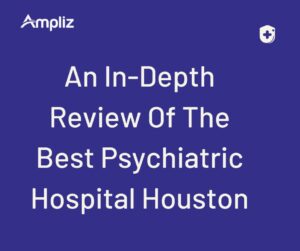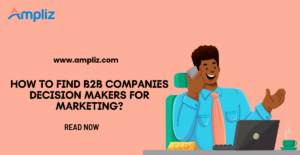In the world of healthcare B2B sales, the speed and accuracy of your outreach can determine whether you close a deal or lose it to a competitor. Healthcare organizations—from hospitals and clinics to IDNs and physician groups—have complex buying journeys and involve multiple stakeholders. This is why B2B healthcare prospecting is more than just compiling a contact list; it’s about targeting the right decision-makers with precision.
Gone are the days when sales teams spent weeks building and verifying lead lists manually. With modern healthcare data intelligence platforms like Ampliz, sales and marketing teams can now build a qualified healthcare lead list in minutes, not months.
This blog will show you exactly how to do that.
Why Healthcare Prospecting Needs to Be Highly Targeted
Healthcare is a specialized industry with intricate organizational structures. When you’re selling to hospitals, outpatient centers, or physician practices, you’re not targeting just one type of buyer. You need to navigate:
- C-Level Executives (CEO, CFO, CIO)
- Department Heads (Cardiology, Oncology, Radiology, etc.)
- Procurement Officers
- Clinical Decision-Makers
Each of these roles has different priorities, budgets, and pain points.
A blanket sales approach doesn’t work. You can’t afford to waste time chasing unqualified leads who don’t have decision-making power or need your solution. That’s why targeted healthcare lead generation is essential.
What Makes a Qualified Healthcare Lead?
A qualified healthcare lead is someone who not only fits your Ideal Customer Profile (ICP) but also shows a higher intent to purchase. In B2B healthcare prospecting, a qualified lead generally has:
Relevant Job Role
You want someone in a position to make or influence buying decisions—like a Hospital Administrator, Head of Procurement, Medical Director, or CIO.
Organizational Fit
Is the lead from the right type of healthcare facility? For instance:
- Selling EHR software? Target mid-to-large hospitals or multispecialty clinics.
- Offering medical devices? Focus on high-volume surgical centers or hospitals with specific specialties.
Geographic and Regulatory Fit
Make sure the leads are from regions you can serve and comply with local regulations like HIPAA (U.S.) or GDPR (Europe).
Intent Signals
Behavioral indicators such as recent job changes, funding announcements, technology adoption, or news mentions help predict who’s likely to buy.
Traditional Prospecting vs. Modern Data-Driven Prospecting
Let’s compare how things used to be done vs. how modern sales teams do it today:
| Traditional Prospecting | Modern Prospecting |
|---|---|
| Manual list building from LinkedIn or directories | Use of real-time data platforms like Ampliz |
| Relying on trade shows for contacts | Smart filters and AI-based segmentation |
| Cold outreach to generic email addresses | Targeted outreach with verified direct contacts |
| Low conversion and response rates | Higher ROI with quality, segmented data |
Traditional methods are time-consuming and unreliable. You may end up with a large list but only a handful of relevant contacts. In contrast, modern tools allow for data-driven healthcare prospecting that delivers real results.
Step-by-Step: How to Build a Qualified Healthcare Lead List in Minutes
Step 1: Define Your Ideal Customer Profile (ICP)
Before you jump into any tool or platform, identify:
- Industry and type (hospital, nursing home, urgent care, IDN, etc.)
- Size of the facility (beds, employees, revenue)
- Location (state/city/region)
- Job roles (CTO, procurement head, clinical head)
This helps you focus only on the most relevant leads, cutting down on wasted effort.
Step 2: Choose a Smart Healthcare Data Platform
Platforms like Ampliz offer highly segmented data covering over 4 million verified healthcare contacts, including:
- Hospital executives
- Physicians
- Decision-makers across departments
- Technology usage data (EHR, PACS, telehealth)
You can apply smart filters to instantly create a custom lead list based on your ICP.
Step 3: Apply Targeting Filters
Use the platform’s filtering features to:
- Select facilities based on net patient revenue
- Choose job titles like “Chief Medical Officer” or “Director of IT”
- Filter by specialty, e.g., oncology, pediatrics, or emergency medicine
- Target organizations using specific health tech platforms
This level of precision means you get qualified healthcare leads—not just a bunch of names.
Step 4: Export & Enrich the List
Once filtered, you can download your lead list with enriched data:
- Verified email addresses
- Phone numbers
- LinkedIn profiles
- Organization info
- Technology insights
Step 5: Segment for Personalized Outreach
Divide your list by buyer persona or job role. Create messaging tailored to each segment:
- C-level execs: ROI-focused messaging
- Department heads: Performance benefits
- IT roles: Integration and security
Tools That Help Build Healthcare Prospect Lists Quickly
Here are some platforms used in B2B healthcare prospecting:
Ampliz
- Over 4M+ healthcare contacts
- Filters for job title, revenue, tech stack
- Real-time verified data
- CRM integration and export-ready lists
ZoomInfo for Healthcare
- Large database but often generalized
- Suitable for enterprise teams with large budgets
D&B Hoovers (Healthcare Edition)
- Great for firmographics and financial data
- Less accurate on individual contact info
Among these, Ampliz stands out for precision and healthcare-specific intelligence, making it ideal for marketers and sales teams focused on hospitals, clinics, and IDNs.
Best Practices for Reaching Out to Qualified Leads
1. Personalize Everything
Use the recipient’s name, organization, and reference their role or department. Example:
“Hi Dr. Lee, I noticed your department recently expanded into outpatient cardiology. Our device can streamline patient throughput by 30%.”
2. Use Multi-Channel Outreach
- Email: The primary channel; make it value-driven.
- Phone: For follow-up or high-value leads.
- LinkedIn: Connect before pitching. Share useful content first.
3. Create a Follow-Up Cadence
Don’t stop after one email. Use a structured follow-up:
- Day 1: Email
- Day 3: LinkedIn connect
- Day 5: Follow-up email
- Day 10: Phone call
4. Focus on Value, Not Features
Decision-makers don’t care about features unless they solve a pain point. Focus on cost savings, compliance, improved patient outcomes, or time efficiency.
Measuring the Success of Your Prospecting Campaign
You’ve built and used your list—how do you know it’s working?
Key Metrics to Track:
- Open rate (goal: 20-35%)
- Reply rate (goal: 10-20%)
- Qualified meeting rate
- Cost per lead (CPL)
- Conversion to opportunity
A/B Test Subject Lines & Messaging
Test different subject lines, email bodies, CTAs. Let data guide your future campaigns.
Sync with CRM for Better Visibility
Integrate platforms like Ampliz with CRM software solutions like Creatio, Salesforce, HubSpot, or Zoho for streamlined workflows and tracking.
Conclusion: Build Smarter, Not Harder
In today’s competitive healthcare space, success comes down to how fast and how accurately you can reach decision-makers. With the right tools and data, you can build a qualified healthcare lead list in minutes, not days or weeks.
Platforms like Ampliz eliminate the guesswork by offering verified, real-time, segmented data so you can focus on selling instead of hunting for contacts.
So, are you ready to boost your B2B healthcare prospecting?
Start Building Your Healthcare Lead List Today
Looking to accelerate your sales pipeline?
👉 Try Ampliz and build your next healthcare prospect list in minutes.



